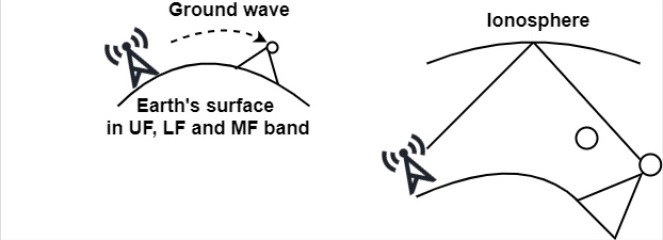
 Data Structure
Data Structure Networking
Networking RDBMS
RDBMS Operating System
Operating System Java
Java MS Excel
MS Excel iOS
iOS HTML
HTML CSS
CSS Android
Android Python
Python C Programming
C Programming C++
C++ C#
C# MongoDB
MongoDB MySQL
MySQL Javascript
Javascript PHP
PHP
- Selected Reading
- UPSC IAS Exams Notes
- Developer's Best Practices
- Questions and Answers
- Effective Resume Writing
- HR Interview Questions
- Computer Glossary
- Who is Who
What are the RF (Radio Frequency) Networks?
RF can travel through air or space but require specific transmitting and receiving mechanisms. It has frequencies between 10 kHz to 14 kHz. In VLF (very low frequency), LF (Low Frequency), and MF (Medium Frequency) bands, radio waves follow ground waves.
AM radio broadcasting uses the MF band. Radio waves in these bands pass through the building quickly. HF (High Frequency) and VHF (Very High Frequency) tend to be absorbed by the earth, but these waves travel through the Ionosphere. These waves are refracted by it and sent back to earth. The military communicates in HF and VHF bands.

Advantages
- It is easy to generate and can travel long distances.
- It can easily penetrate buildings, i.e., the signals do not attenuate if the building comes in between the path of signals.
- Radio waves are unidirectional means they travel in all directions, i.e., no need to be careful about the antenna’s setting.
- The features of radio waves are frequency dependent.
Disadvantages
- At low frequencies, radio waves transfer through obstacles well, but power falls off sharply with the distance.
- At high frequencies, radio waves tend to traverse in a straight line and bounce off at obstacles.
- At all frequencies, radio waves are discussed to interfere with vehicles and several electrical equipment types.

Advertisements
